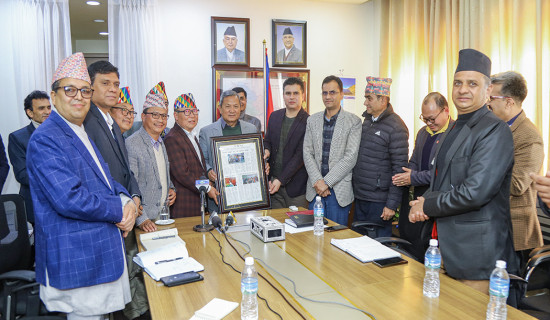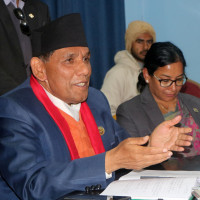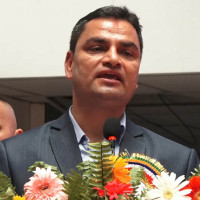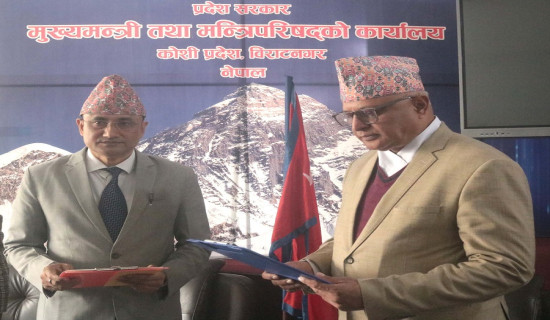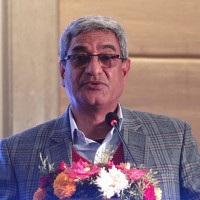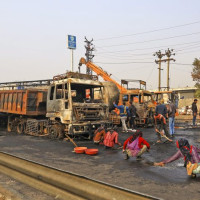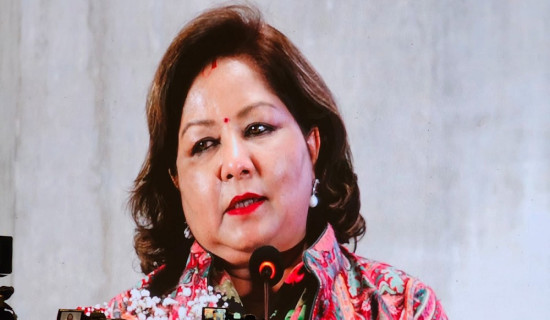- Thursday, 26 December 2024
Public schools making mini museums in schools
BY Babu Ram Karki,Barahakshetra, July 23: Mahendra Secondary School, located in Barahakshetra-6, Chakraghatti, has been collecting indigenous items. The school has transformed a room into a mini museum by gathering these old items with the aim of passing the cultures on to the younger generation.
In Barahakshetra, eight public schools that offer education up to the higher secondary level have started creating mini museums in their schools.
Under the supervision of the municipal education department, schools such as Aadarsha Secondary School, Chatara, Jadeja Secondary School, Bharaul, Mahendra Secondary School, Bharaul, Mahendra Secondary School, Titrigachhi, Saraswoti Secondary School, Rajawas, Prakash Secondary School, Prakashpur and Janata Secondary School, Madhuban, have also established mini museums in their schools.
With the advent of modern technology, traditional items are on the verge of extinction. Consequently, the Barahakshetra Municipal Department, along with the Youth and Sports Department, instructed schools to create museums of traditional local tools starting this academic year.
Mahendra Secondary School has curated a museum by collecting antique household items, traditional items, ancient caste and religious artefacts, traditional household items based on technology, ancient technological items, old musical instruments, and other indigenous items.
Chandiraj Pokharel, the headmaster of Mahendra Secondary School, said that as ancient items are disappearing from villages, his school has set up a museum to introduce these items to students and transfer this knowledge to the younger generation.
He further added that the school has kept records of parents, students, and teachers who contributed ancient items. “We have been collecting such items to spread knowledge about how we arrived at today’s technological era from the past,” said the headmaster.
He emphasised that ancestors used to make items for daily life using local materials. The tradition of younger generations following in the footsteps of older generations helped people become creative and ensured that skills were transferred from one generation to the next, thereby preserving traditional techniques.
However, with modern technology, many old products have been replaced. Devendra Bahadur Malla, Chief Deputy Secretary of the Municipal Education, Youth, and Sports Branch, stressed the need for establishing mini museums to revive and preserve the skills of the forefathers.
Currently, with the help of parents, teachers, and students, Mahendra Secondary School has collected items such as ploughs, butter churns, winnowing trays, baskets, traditional stools, rolling pins, traditional lamps, feeding bowls, grinding stones, wooden pestles, harrows, axes, blacksmith tools, traditional drums, hand drums, folk instruments, hookah pipes, reed mats, traditional cooking pots, and lanterns, according to teacher Prabin Khadka of Mahendra Secondary School.
Headmaster Pokharel said, “It is our responsibility to preserve and collect these traditional tools to educate future generations, which is why the school has started collecting items used by our ancestors.”
Barahkshetra Municipality has stated that the schools have initiated the museum-building campaign so that the new generation can learn about and understand old Nepali items even in modern times.
The municipality has instructed the schools to collect these items so that the new generation can see and understand their culture, attire, old tools, and musical instruments within the school premises. Other schools in Barahakshetra have also started collecting their traditional tools.



